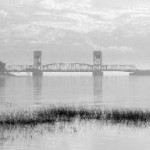Okanagan Valley municipalities’ opposition to sale of leased Crown-owned recreational lots on upland water reservoirs now has the support of native bands as well.
Grand Chief Stewart Phillip, chairman of both the Okanagan Nation Alliance and the Union of B.C. Indian Chiefs, told members of the Okanagan Water Stewardship Council this week they would be happy to support the council’s position against sales of those lots.
The issue will go to the March 23 meeting for official approval, but a hasty conference between the chiefs of the Okanagan and Penticton Indian bands resulted in immediate agreement on the native bands sending letters of support for the council’s position, to the province.
Preventing such lakeshore property from being developed as exclusive resorts or elaborate homes is in line with their views of such areas as only for seasonal use, he explained.
For instance, the property owners around Pennask Lake are on the verge of logging their lakefront properties, but native bands are opposing that action because of concerns about the native archeological artifacts that would be destroyed, he said.
Along with Chief Fabian Alexis of the Okanagan Indian Band and Richard Armstrong of the Penticton band, Phillip was a panel member talking to members of the council about native views on water in the Okanagan.
Armstrong, an Okanagan Knowledge Specialist, said water is sacred and should be respected—it’s the only thing capable of sustaining life or taking it away.
He was describing his years growing up in the Okanagan Valley, to help provide a broader understanding of native values as far as the land and values are concerned.
Deana Machin, manager of the fisheries program for the Okanagan Nation Alliance is a member of the council, and introduced the three native leaders.
Armstrong was brought up in a very traditional family that traveled around the valley harvesting fish and game and plants for their food.
The Okanagans were a nomadic tribe that followed the seasonal ripening of various foods.
For instance, he said they would cross the lake on a barge, camping on the way to Mission Creek, where they would pitch camp for several days, eating fish.
Tubloads would be hauled back and shared with relatives, he said.
His people knew where the best spring water in the valley was, and they respected and honoured the water.
His uncle taught him a lot about the land and water and he said he would make him swim in the water, early in the morning.
“I hated that, it was so cold,” he recalled. “(But) we’ve been here thousands of years, like the life that’s been on this land for years. If you look at flowing water, it changes all the time; it’s different water, new water, like the changes in our lives. It’s sacred in itself. It never goes dry and yet it never fills up.”
Armstrong said it’s vital we remember its importance.
“No one can say it belongs to me—you can’t have it. Every thing living depends on it,” he explained.
He is concerned now, because not many want to protect it.
Instead, they want to use it up.
“Water is healing for us,” he said.
Despite its great power, he said it doesn’t use its might; instead it seeks the lowest places to flow through, to help people, he said.
Chief Fabian Alexis explained: “Our people were hunters, fishers, gatherers. A lot of our doings were based on nature. People knew where the best water was. They knew where the best water holes were. As a kid, my grandmother would take us to water. She would say ‘wash your face.’ It was cleansing, healing, reviving. It washed away what you were feeling at the time.
“When white settlers came, our ways were disrupted and we were put on reserves and encouraged to become farmers,” he said.
Now, he said there’s been huge urban development in the valley and he wonders about the sustainability of it.
“There may be water, but how good is it?” he questioned.
He also said he is concerned there doesn’t seem to be a plan for protection of what foreshore is left; and for protection of habitat.
“Streams that have historically run year-round, now dry up some months of the year, and fish have no water,” he said.
He questions how developers can come in and just demand water.
He would like to see more consultation when new development is planned instead of native bands being notified near the end of the process.
Grand Chief Stewart Phillip says water should not be looked on as a commodity.
“Indigenous people’s views are spiritual and fundamental,” he said. “For hundreds of years we lived in this valley in a state of harmony and balance with the resources that were here,” he said.
Even after white settlers moved into the valley they lived side by side as neighbours and caretakers of the valley until recent years, he said.
Now, though, there is a great influx of people and huge demands on water.
He said they have a growing concern about the provincial government’s vision: fast-tracking resort development, streamling the approval process for resorts in wilderness areas and the demise of environmental regulatory bodies.
It’s encouraging to see a group like the council take ownership of water issues in the valley, he said, but he is concerned that a collective of real estate investors from elsewhere, who will move on, not take over.
He said the council has some valuable work to do.

